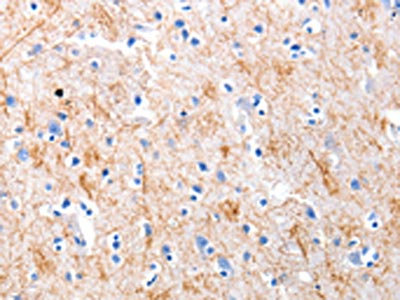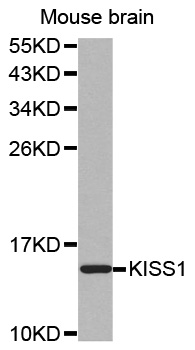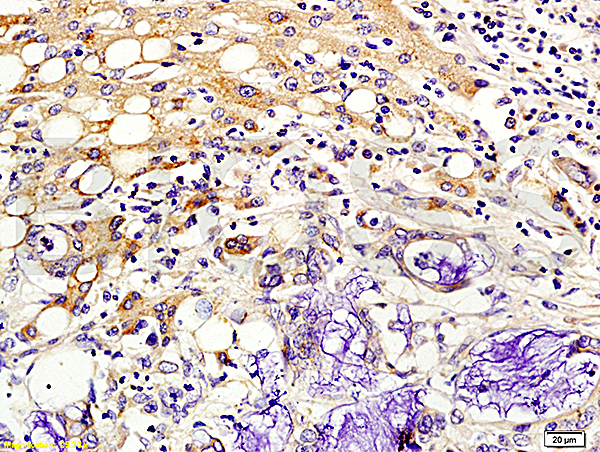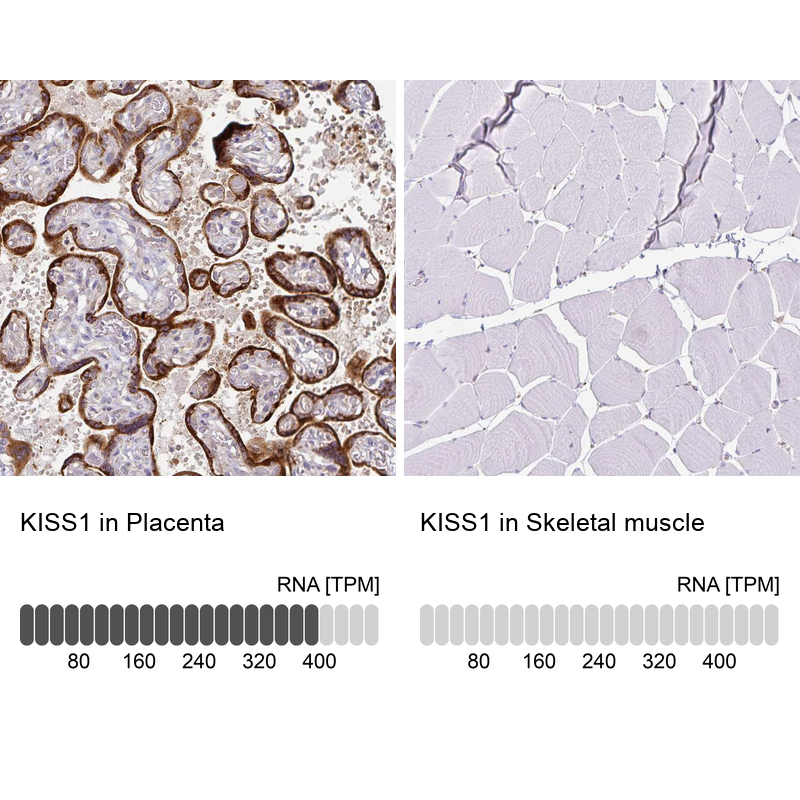
The image on the left is immunohistochemistry of paraffin-embedded Human brain tissue using CSB-PA595662(KISS1 Antibody) at dilution 1/5, on the right is treated with synthetic peptide. (Original magnification: x200)
KISS1 Antibody
CSB-PA595662
ApplicationsWestern Blot, ELISA, ImmunoHistoChemistry
Product group Antibodies
ReactivityHuman, Mouse
TargetKISS1
Overview
- SupplierCusabio
- Product NameKISS1 Antibody
- Delivery Days Customer20
- ApplicationsWestern Blot, ELISA, ImmunoHistoChemistry
- CertificationResearch Use Only
- ClonalityPolyclonal
- ConjugateUnconjugated
- Gene ID3814
- Target nameKISS1
- Target descriptionKiSS-1 metastasis suppressor
- Target synonymsHH13, KiSS-1, metastasis-suppressor KiSS-1, kisspeptin-1, malignant melanoma metastasis-suppressor, metastasis-suppressor-1, metastin, prepro-kisspeptin
- HostRabbit
- IsotypeIgG
- Protein IDQ15726
- Protein NameMetastasis-suppressor KiSS-1
- Scientific DescriptionThis gene is a metastasis suppressor gene that suppresses metastases of melanomas and breast carcinomas without affecting tumorigenicity. The encoded protein may inhibit chemotaxis and invasion and thereby attenuate metastasis in malignant melanomas. Studies suggest a putative role in the regulation of events downstream of cell-matrix adhesion, perhaps involving cytoskeletal reorganization. A protein product of this gene, kisspeptin, stimulates gonadotropin-releasing hormone (GnRH)-induced gonadotropin secretion and regulates the pubertal activation of GnRH nuerons. A polymorphism in the terminal exon of this mRNA results in two protein isoforms. An adenosine present at the polymorphic site represents the third position in a stop codon. When the adenosine is absent, a downstream stop codon is utilized and the encoded protein extends for an additional seven amino acid residues.
- ReactivityHuman, Mouse
- Storage Instruction-20°C or -80°C
- UNSPSC41116161







